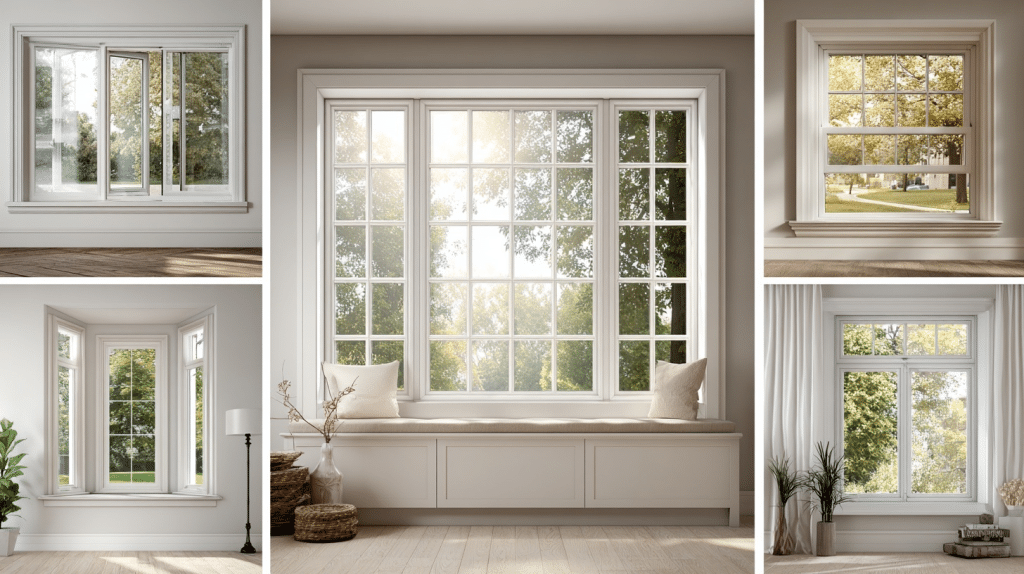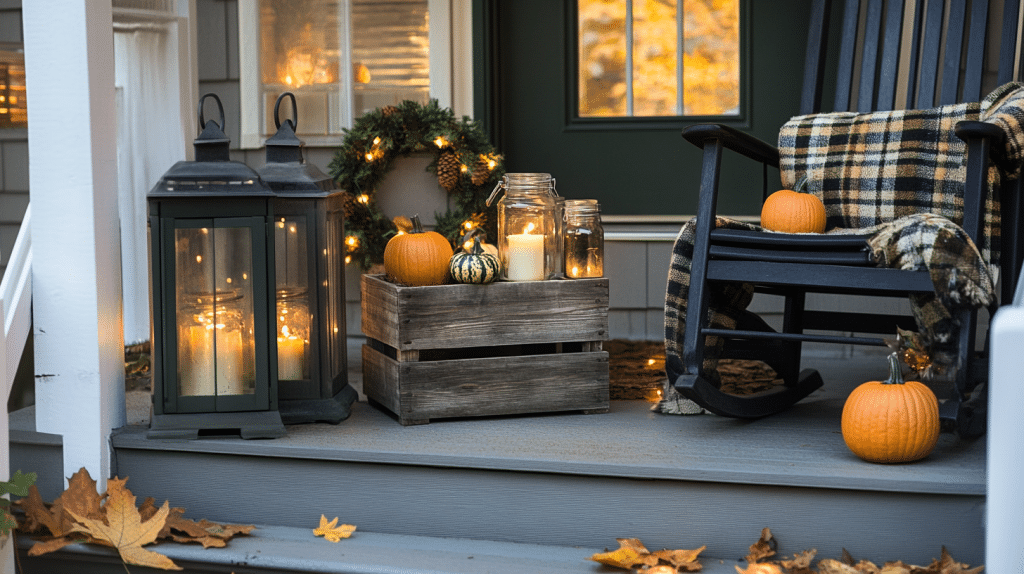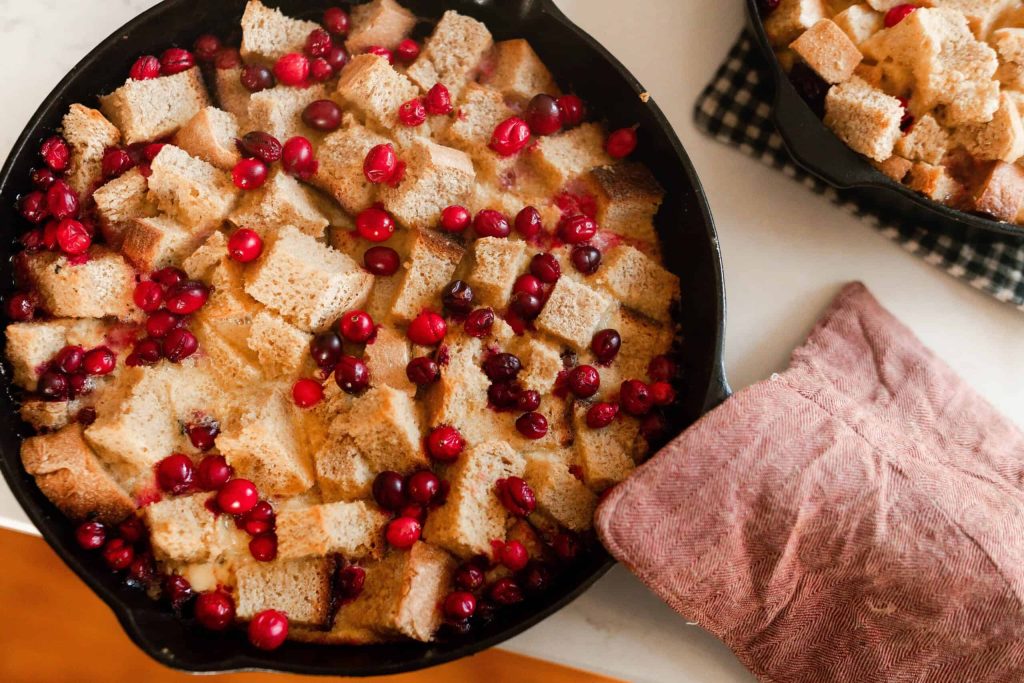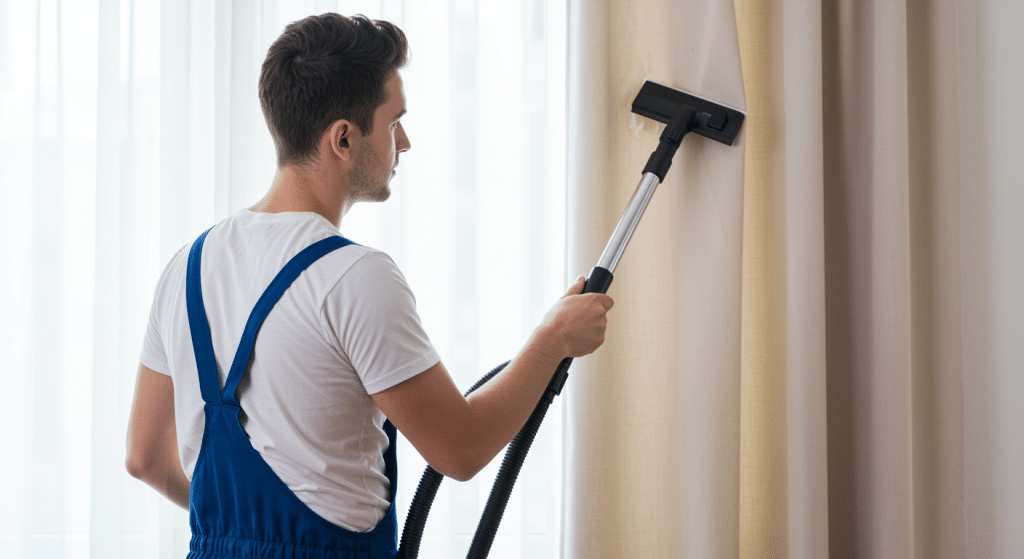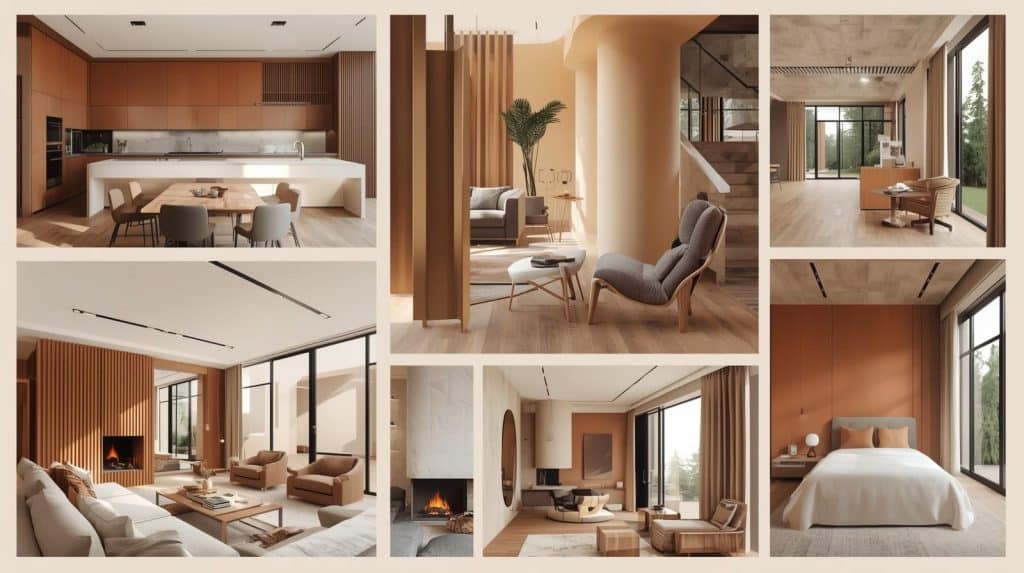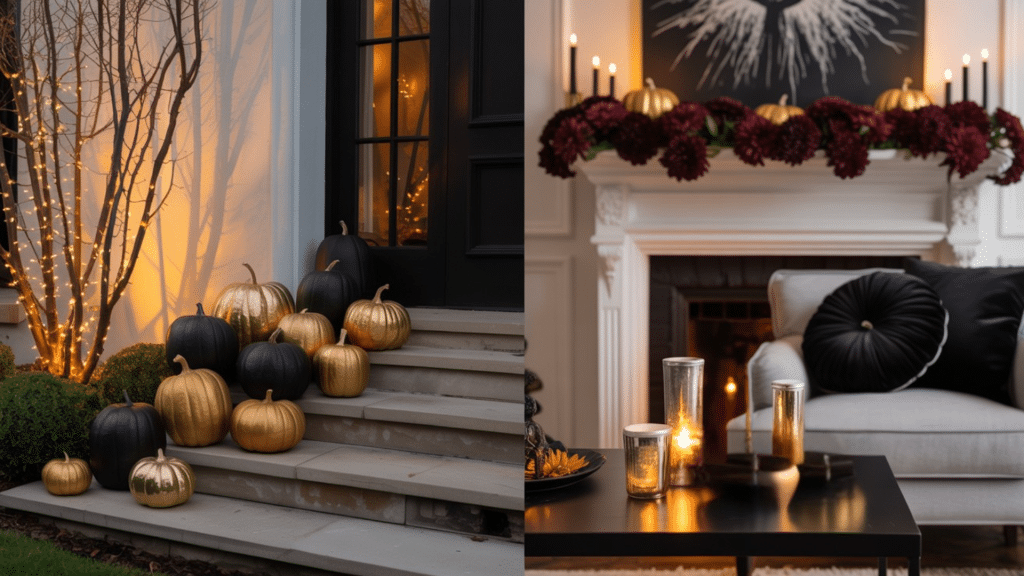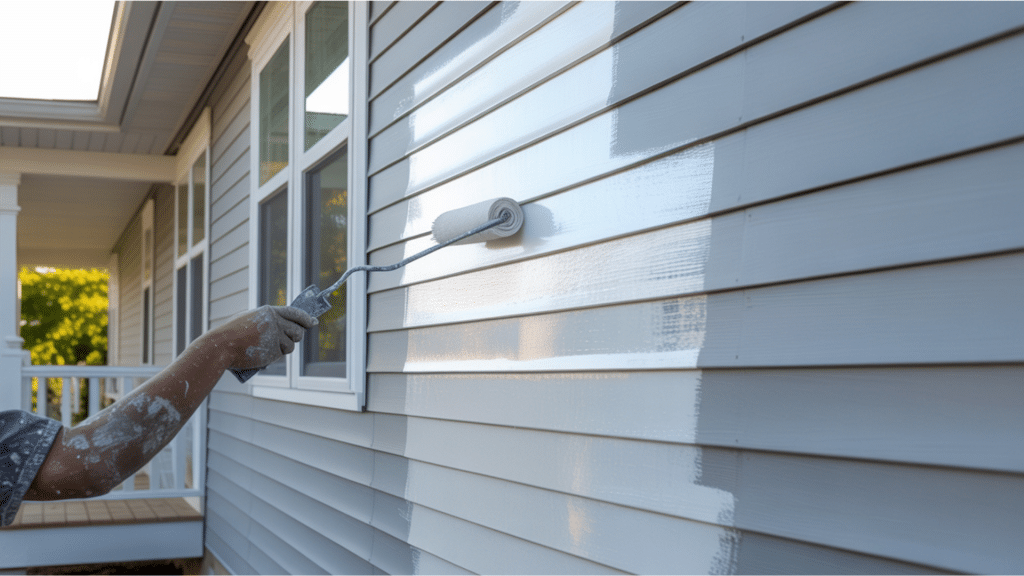Before I show you the different styles for windows, let’s discuss the basic components that make up a window.
Think of it like learning car parts before buying one; you’ll make better choices.
- Frame: This is the outer border that holds everything together. It’s usually made of wood, vinyl, or aluminum. The frame sits in your wall opening.
- Sash: This is the moving part that holds the glass in place. Some sashes slide up and down, others swing open. The sash fits inside the frame.
- Glass Panes: Obviously, this is the see-through part! Modern windows often have double or triple panes for better insulation.
- Muntins: These are the thin strips that divide glass panes within a single sash. They create the classic grid pattern that is often seen on colonial homes.
- Mullions: These are thicker vertical or horizontal bars that separate different window units. If you have two windows side by side, the mullion is what’s between them.
Popular Window Styles for The Home
I’ll show you the ones that work best for different rooms and budgets.
1. Single-Hung Windows
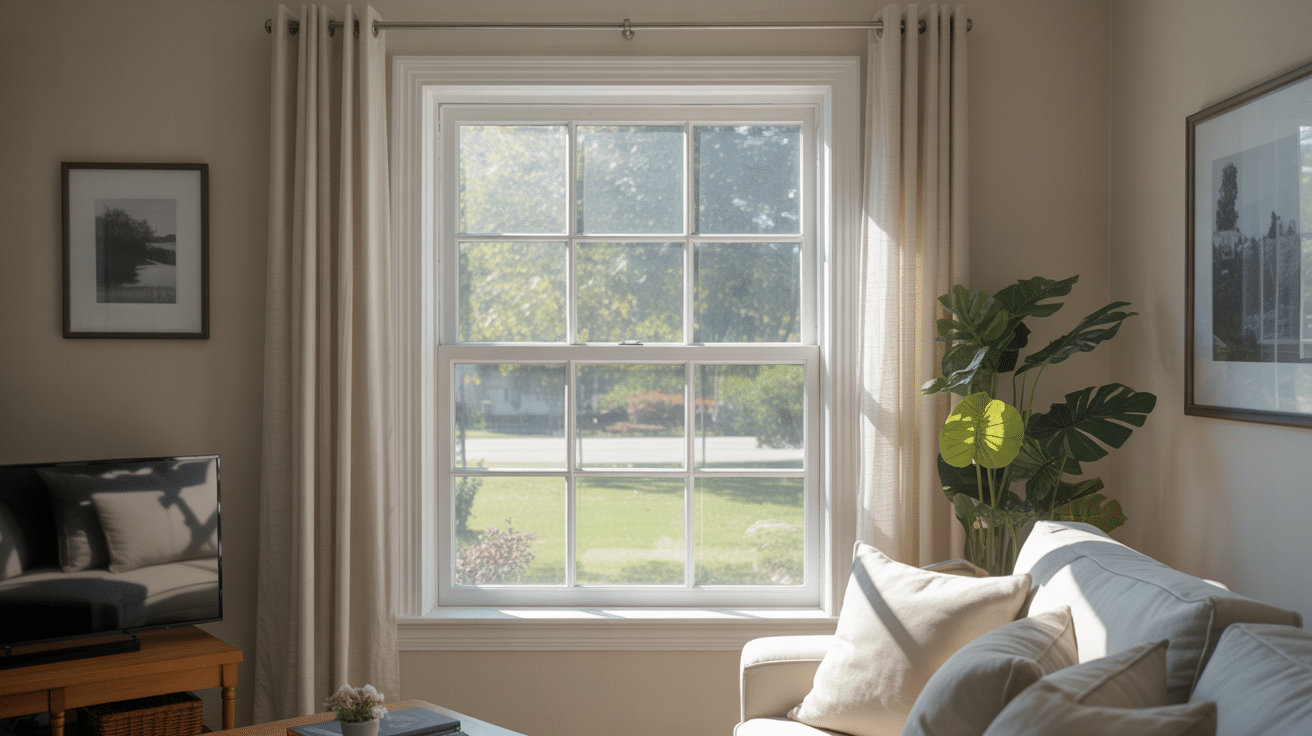
Single-hung windows feature a fixed top sash and a bottom sash that moves vertically. They are simple, affordable, and ideal for traditional homes that seek practical functionality without added complexity.
| Pros | Cons |
|---|---|
| Affordable and widely available. | Only the bottom sash opens, limiting airflow. |
| Energy-efficient due to fewer moving parts. | Cleaning the outside glass can be a challenging task. |
| Classic look fits many home styles. | Less flexible compared to double-hung windows. |
2. Double-Hung Windows
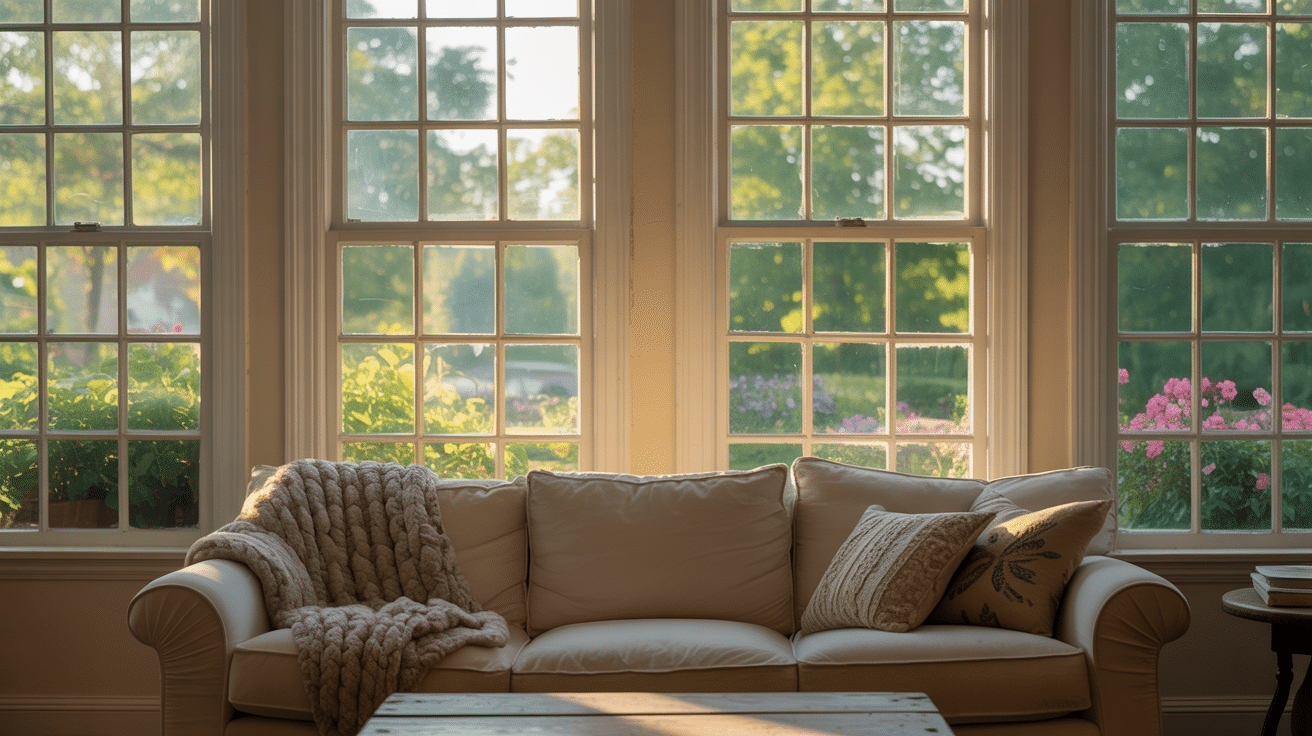
Double-hung windows allow both top and bottom sashes to move, offering better ventilation control. They are classic, adaptable, and easy to clean, making them a favorite for family homes.
| Pros | Cons |
|---|---|
| Both sashes move, giving better airflow. | It can be less energy-efficient than a single-hung window. |
| Easy to clean from inside the home. | Higher cost compared to single-hung windows. |
| Works well with traditional and modern designs. | It may require more maintenance on moving parts. |
3. Casement Windows
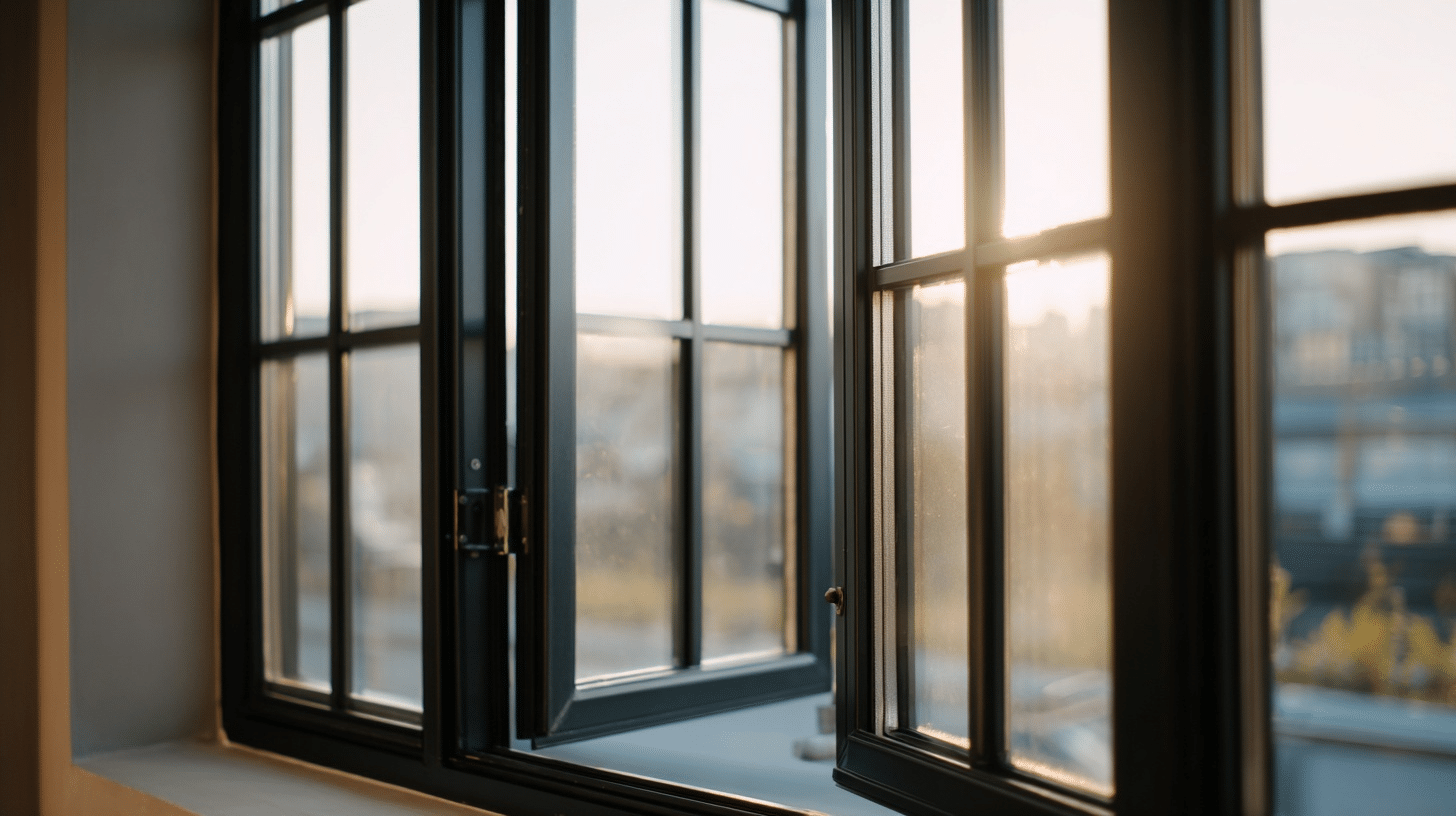
Casement windows swing outward using side hinges, which are operated by a crank handle. They provide excellent Cross-breeze, clear views, and secure locking, making them suitable for kitchens or breezy areas.
| Pros | Cons |
|---|---|
| Provides strong airflow and Cross-breeze. | Needs exterior space to open fully. |
| A tight seal reduces drafts and improves efficiency. | Mechanical crank parts may wear out over time. |
| Offers wide, unobstructed views. | It can be challenging to use near walkways or decks. |
4. Awning Windows
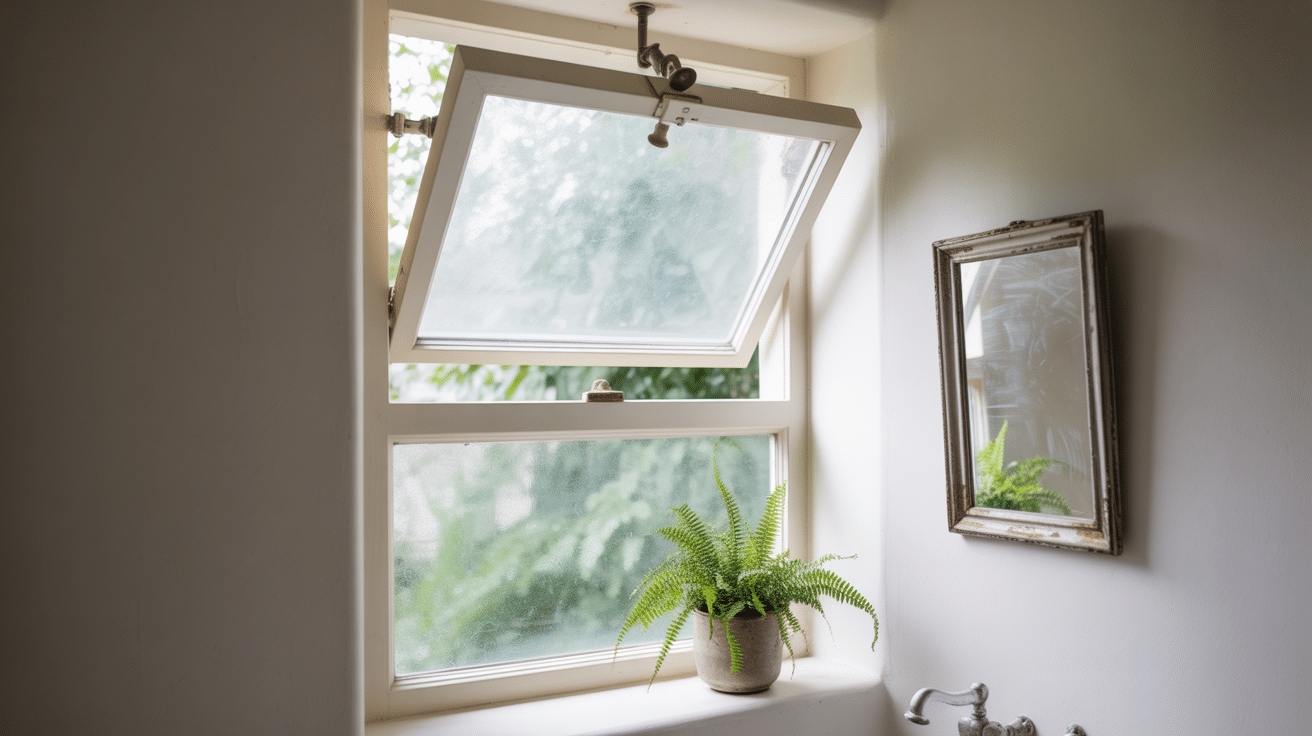
Awning windows hinge at the top and open outward, forming a protective “awning.” They allow fresh air in while shielding interiors from rain, perfect for bathrooms or coastal locations.
| Pros | Cons |
|---|---|
| Can stay open during rain without issues. | Limited in size and design options. |
| Great for privacy while allowing airflow. | May block pathways when open. |
| Energy-efficient due to tight closure. | Cleaning the exterior can be challenging. |
5. Sliding Windows
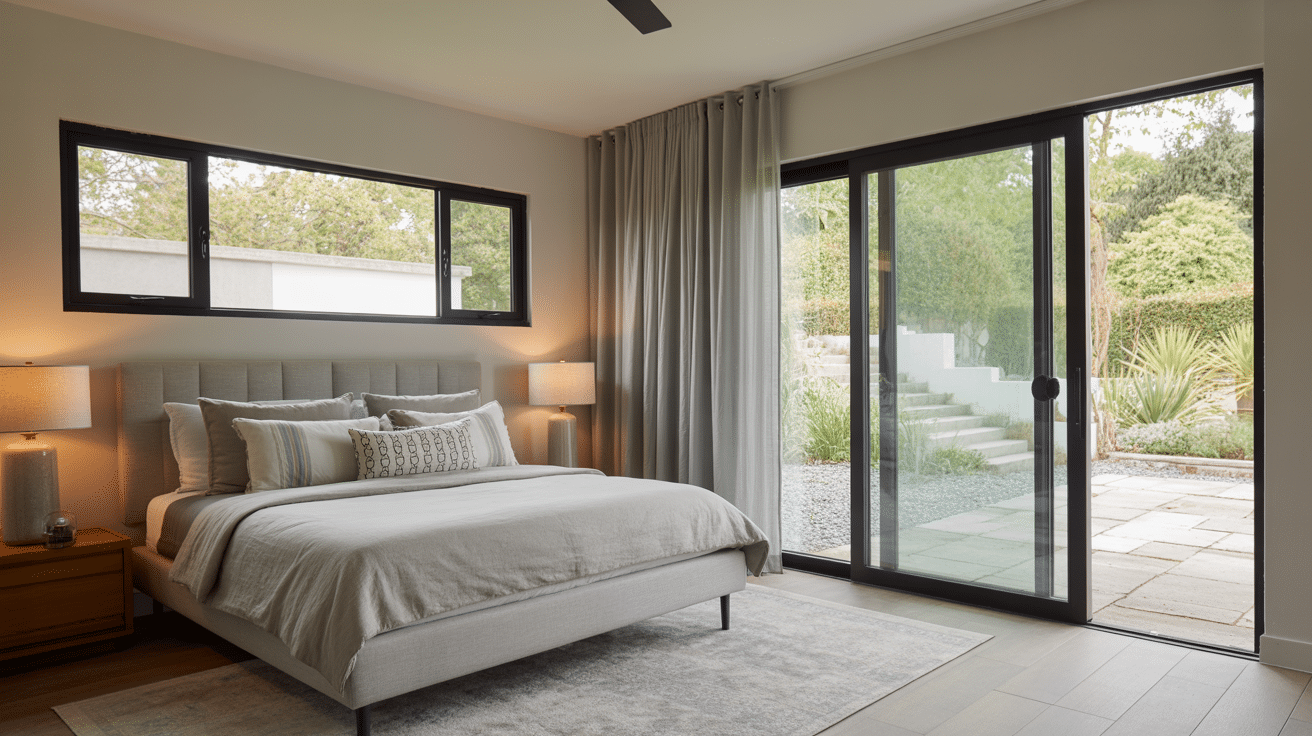
Sliding windows move horizontally along tracks, creating wide openings without requiring extra space. They are easy to operate, low-maintenance, and popular for contemporary homes with large, expansive wall areas.
| Pros | Cons |
|---|---|
| Smooth sliding makes them easy to use. | Tracks collect dirt and need cleaning. |
| Offers wide views and natural light. | Not available in many design variations. |
| Low-maintenance with fewer moving parts. | Provides less ventilation than double-hung. |
6. Bay Windows
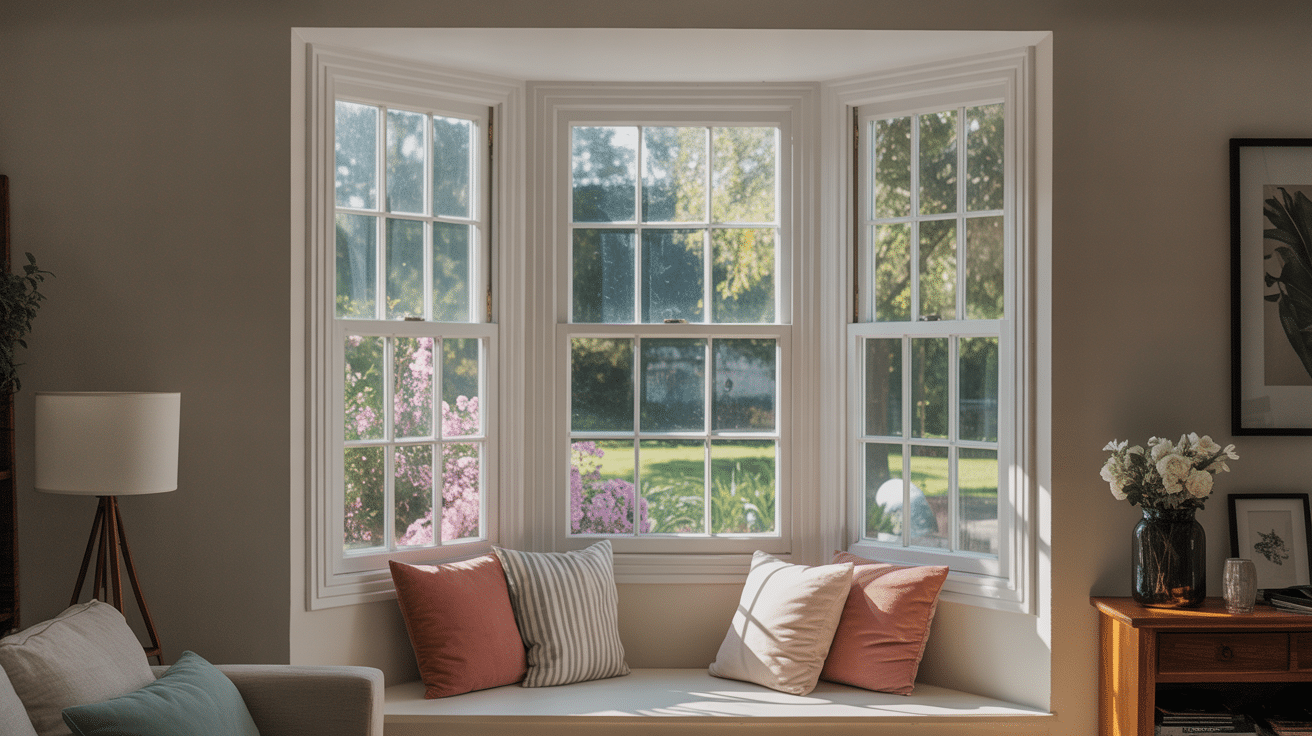
Bay windows project outward from a home, creating a small nook inside. They typically include three panels, adding charm, extra seating space, and expansive exterior views to living rooms.
| Pros | Cons |
|---|---|
| Adds space inside for seating or storage. | Installation can be expensive and complex. |
| Brings out curb appeal with a unique design. | May require structural support in walls. |
| Brings in plenty of natural light. | It can cause heat gain or loss if not insulated. |
7. Bow Windows
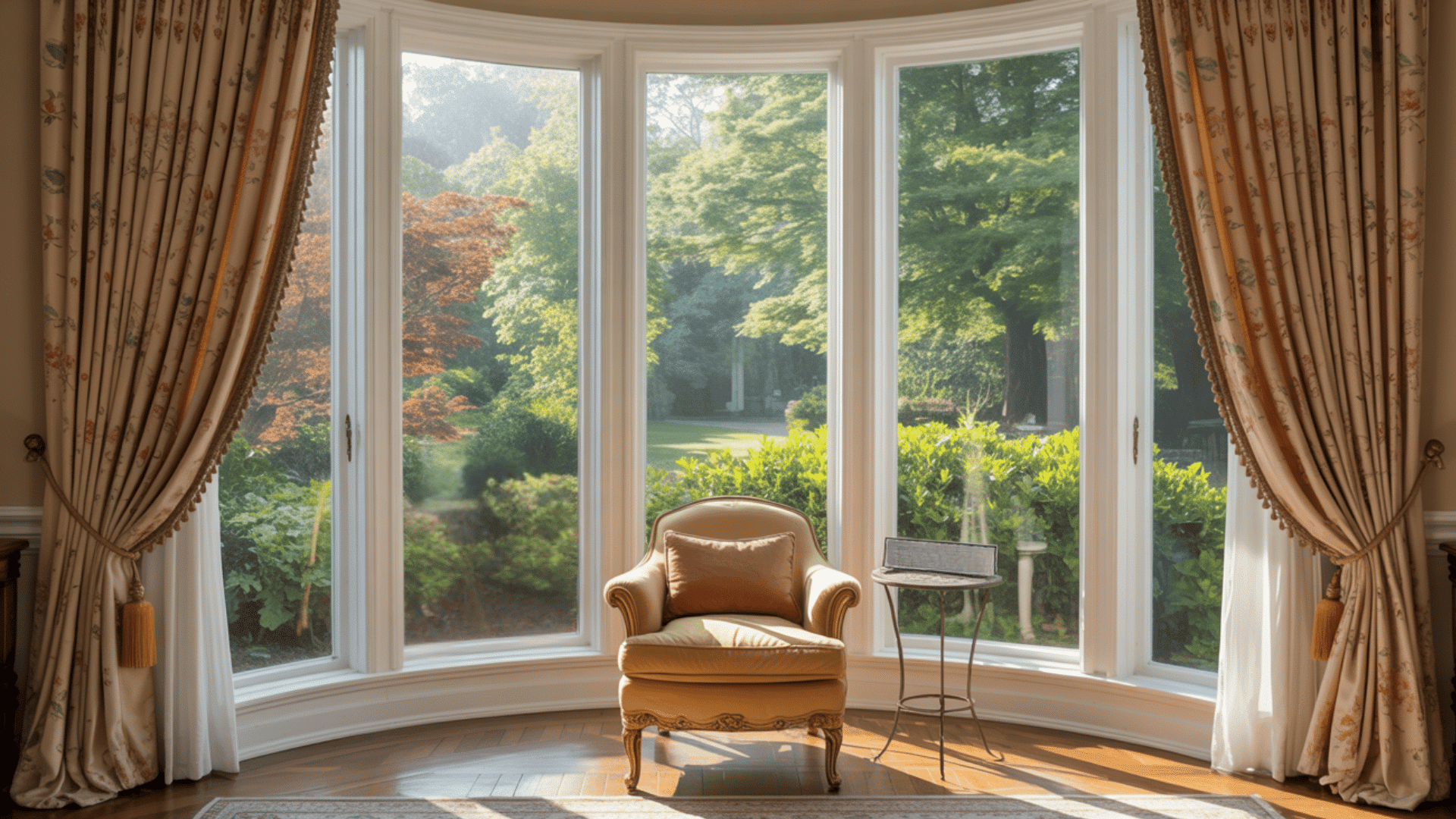
Bow windows curve outward with four or more panels, forming a rounded exterior appearance. They maximize natural light, enhance views, and create smooth alcoves that suit both classic and modern homes.
| Pros | Cons |
|---|---|
| Creates a panoramic view with multiple panels. | Higher cost than bay windows. |
| Brings abundant natural light into rooms. | More difficult to fit blinds or curtains. |
| Adds architectural charm inside and outside. | Requires strong structural support during installation. |
8. Picture Windows
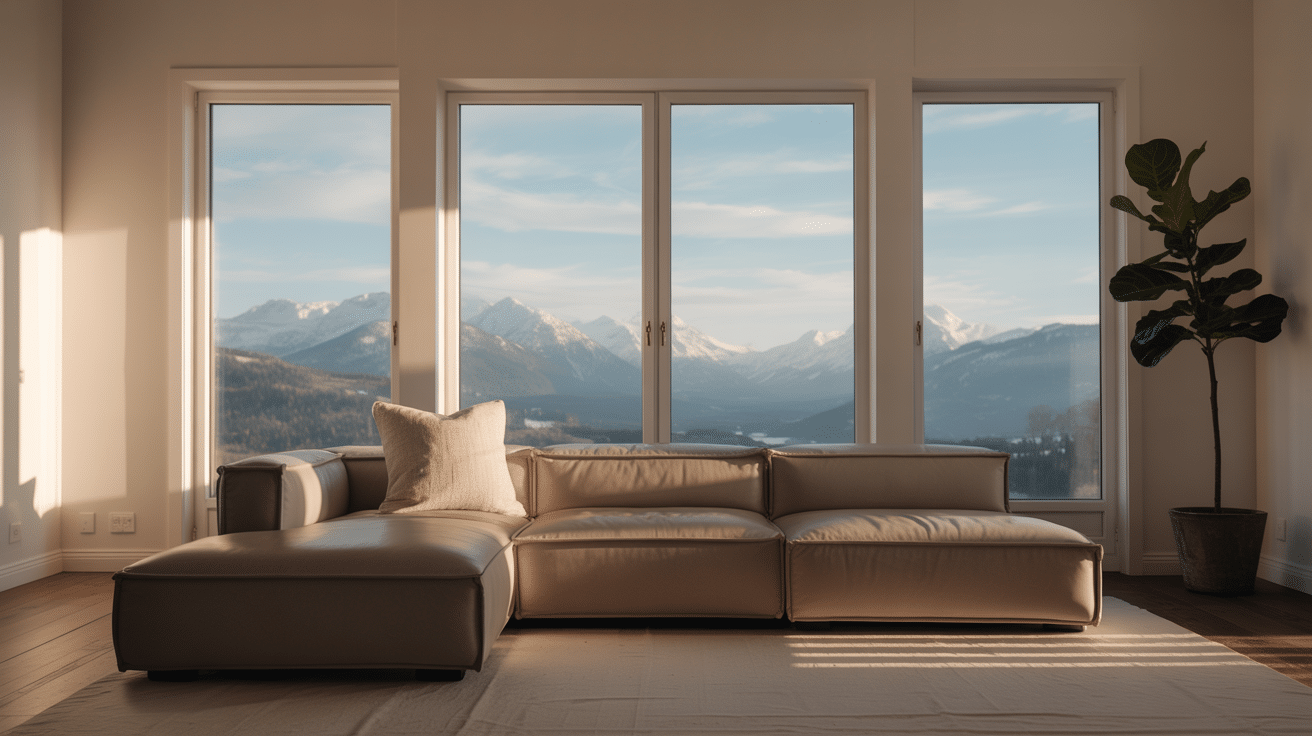
Picture windows are large, fixed panes of glass designed to frame scenic outdoor views. They invite abundant light indoors, make rooms feel spacious, and pair well with other operable windows.
| Pros | Cons |
|---|---|
| Offers clear, unobstructed outdoor views. | Cannot open for air flow. |
| Low maintenance with no moving parts. | Heat gain and loss may occur. |
| Expands the feeling of interior space. | It can lead to glare in sunny rooms. |
9. Skylight Windows
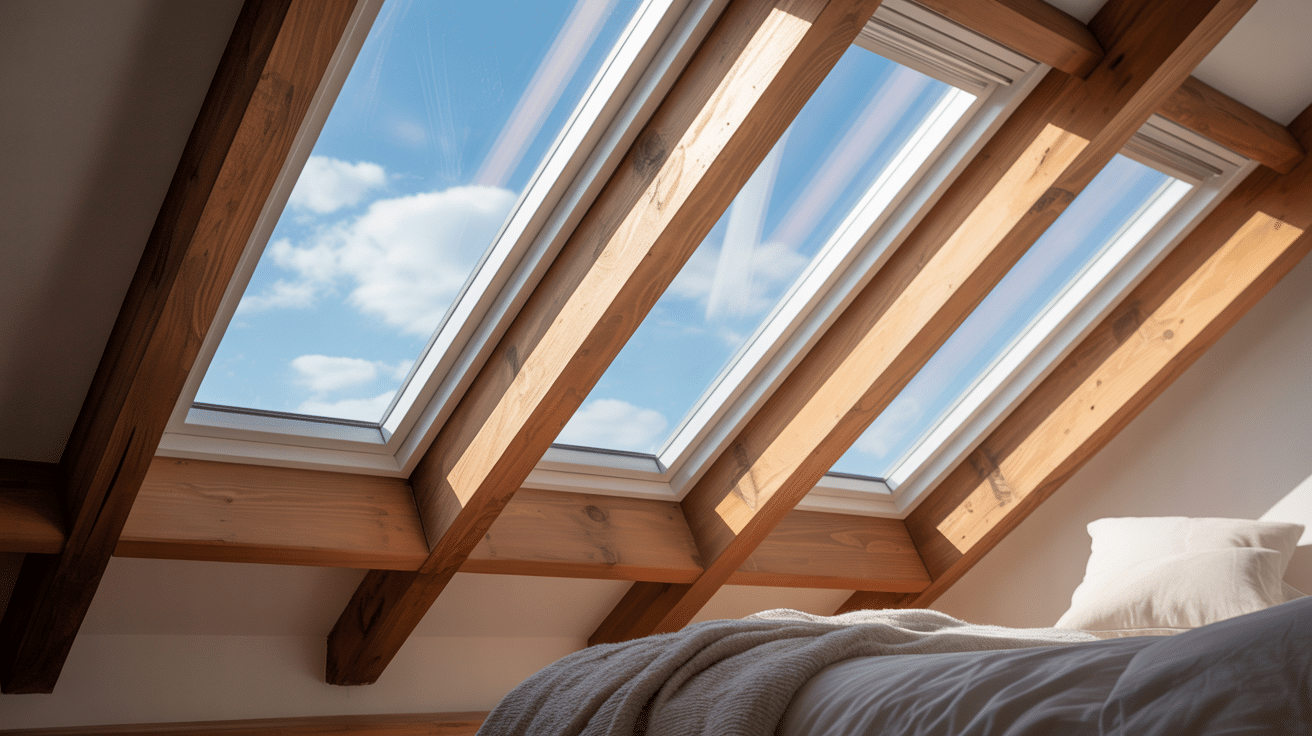
Skylight windows are installed directly into ceilings or sloped roofs. They brighten dark interiors, reduce electricity use, and highlight architectural features while offering optional ventilation in operable skylight models.
| Pros | Cons |
|---|---|
| Fills dark areas with natural light. | Risk of leaks if not installed properly. |
| Reduces the need for artificial lighting. | Installation can be costly and complex. |
| Adds dramatic style to ceilings and rooms. | May increase heat indoors in summer. |
10. Garden Windows
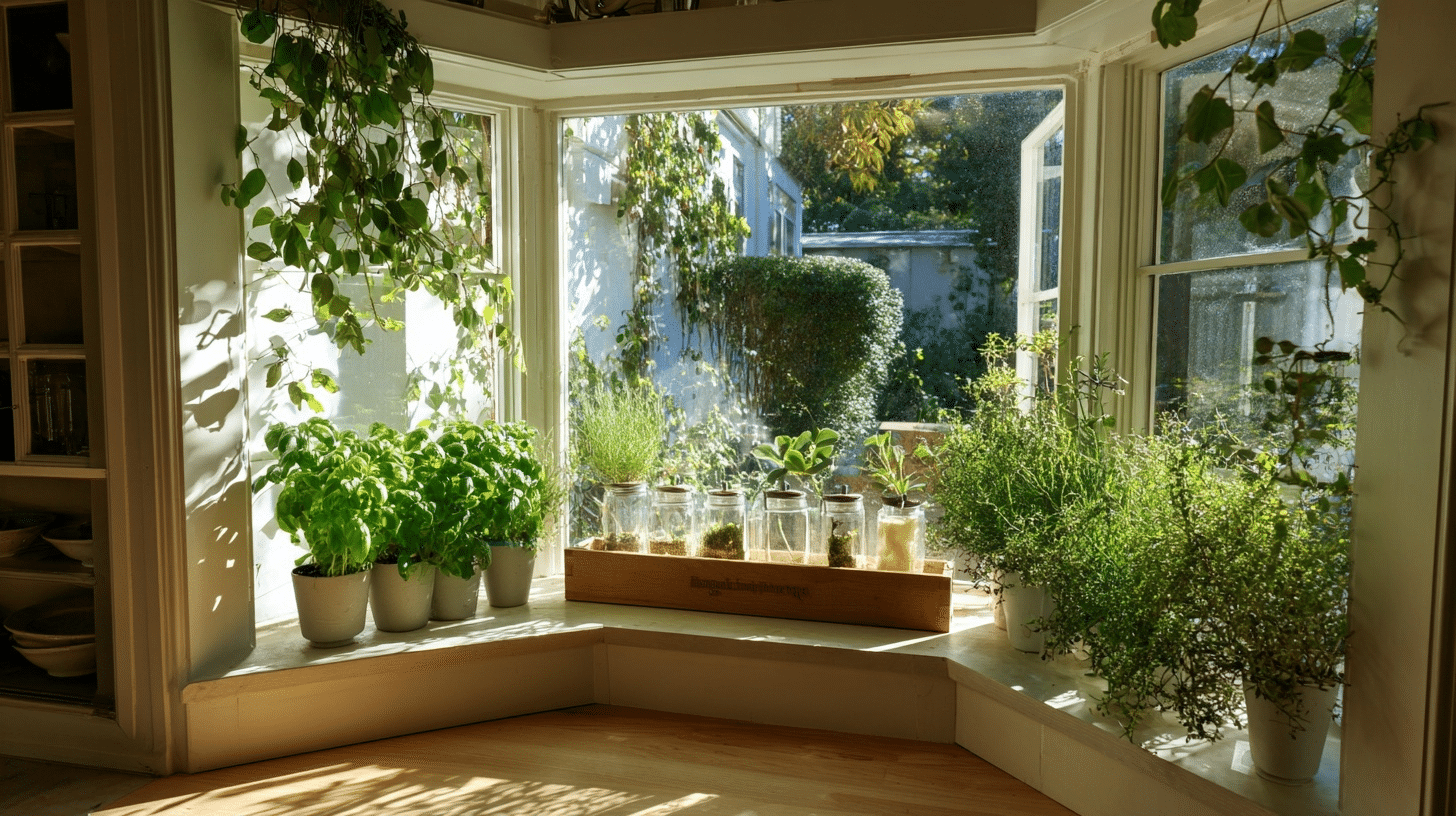
Garden windows extend outward from kitchens, featuring glass on three sides and a shelf. They provide extra space for plants, herbs, or decorative items while maximizing natural sunlight indoors.
| Pros | Cons |
|---|---|
| Ideal for plants and indoor gardening. | Protrudes outward, may affect exterior walkways. |
| Adds charm and character to kitchens. | Expensive compared to regular windows. |
| Brings sunlight from multiple angles. | May increase heat gain during the summer months. |
11. Hopper Windows
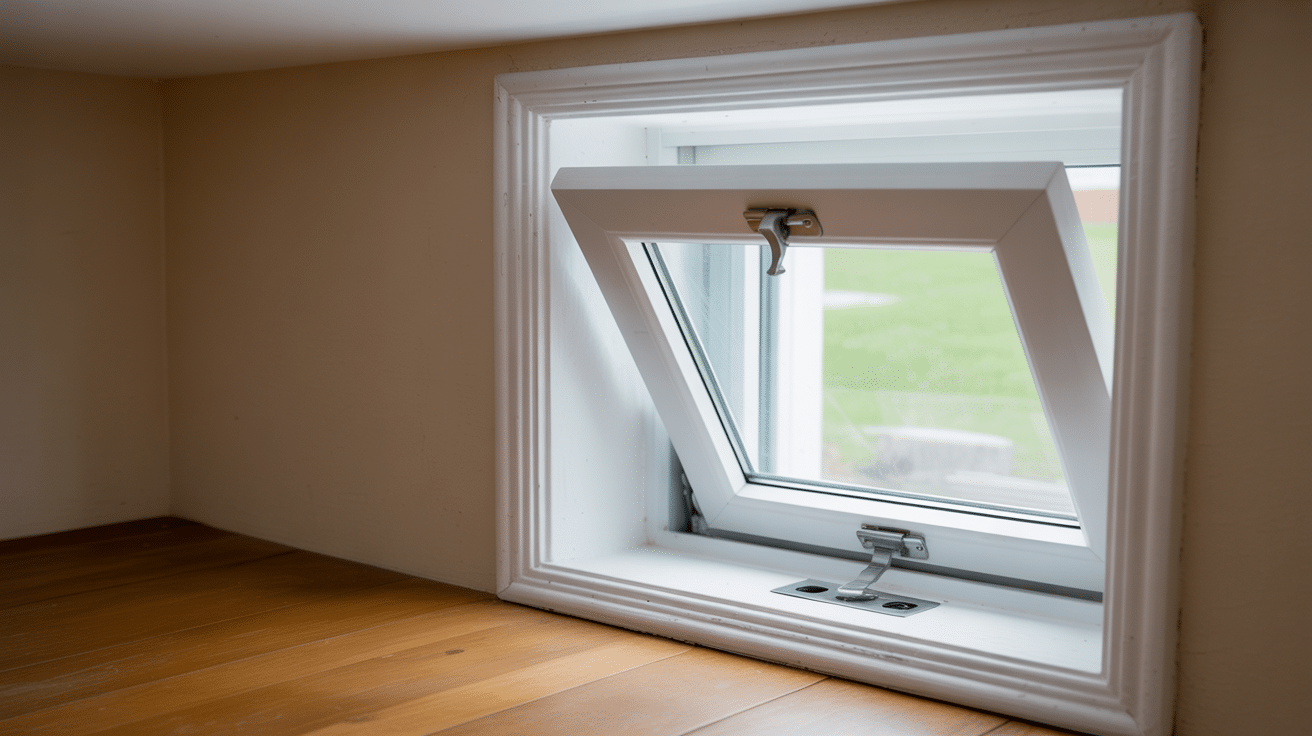
Hopper windows hinge at the bottom and open inward. They are commonly installed in basements, ensuring air flow and security. Their compact design makes them useful for tight, small spaces.
| Pros | Cons |
|---|---|
| Compact and space-saving design. | Opening inward can interfere with interior space. |
| Good circulation for basements and bathrooms. | Limited size reduces the amount of airflow. |
| Secure and tightly sealed when closed. | It can be tricky to clean when placed at a high level. |
12. Arched Windows
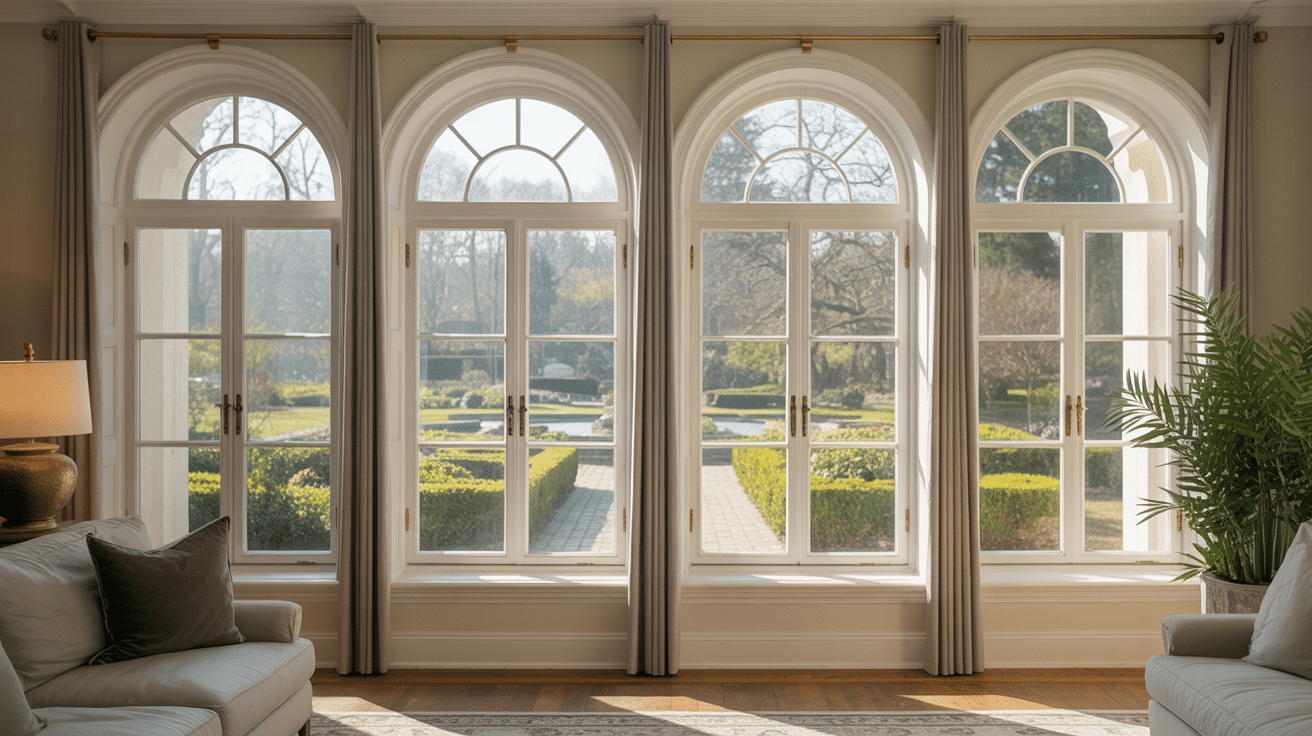
Arched windows feature curved tops, adding softness and architectural interest. They may be fixed or paired with operable windows. These designs enhance curb appeal, especially in Mediterranean, Tuscan, or traditional homes.
| Pros | Cons |
|---|---|
| Adds architectural charm and grace. | Custom shapes increase cost. |
| Works well with both modern and classic homes. | Limited ventilation in a fixed design. |
| Increases curb appeal and uniqueness. | Curtains and blinds can be challenging to install. |
13. Round Windows
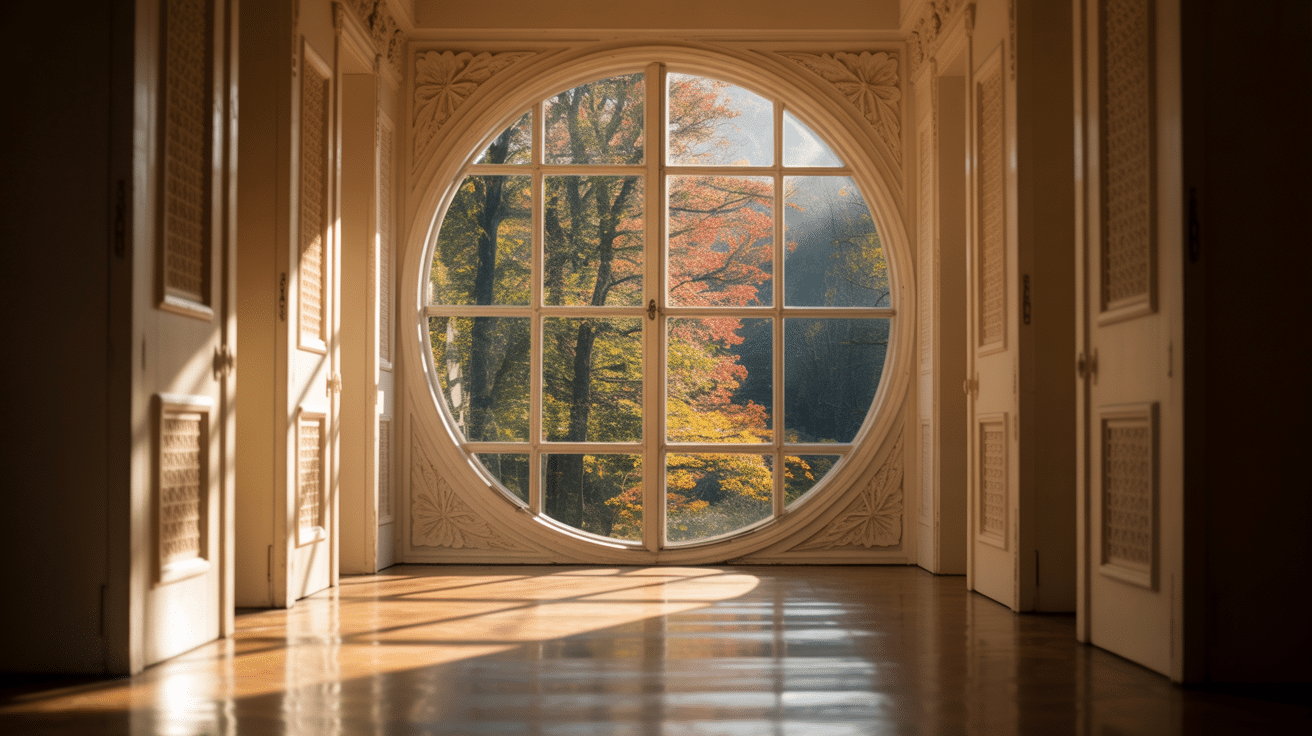
Round windows bring a unique circular design that softens interiors. Often fixed, they appear in stairwells, bathrooms, or attics, offering a striking architectural focal point while maximizing natural light.
| Pros | Cons |
|---|---|
| Unique circular design adds character. | Usually fixed, no circulation. |
| Brings in natural light in tight spaces. | Customization makes them expensive. |
| Creates an architectural focal point. | Limited window treatment options are available. |
14. Jalousie Windows
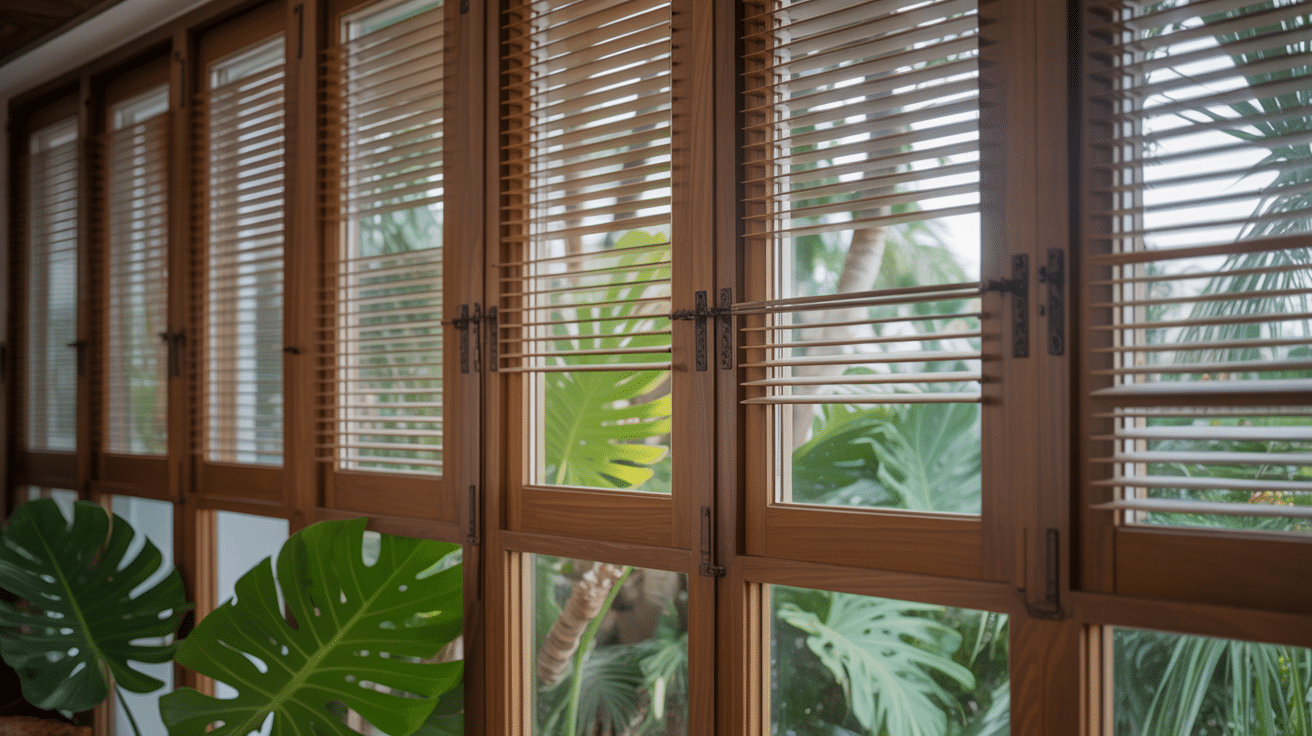
Jalousie windows consist of horizontal glass slats operated with a crank. They provide adjustable airflow and are suitable for warm climates. However, they are less energy-efficient compared to modern alternatives.
| Pros | Cons |
|---|---|
| Provides excellent adjustable airflow. | Poor insulation, not energy-efficient. |
| Affordable and easy to install. | Outdated compared to modern styles. |
| Perfect for warm, tropical climates. | Offers limited security compared to solid designs. |
15. Tilt-And-Turn Windows
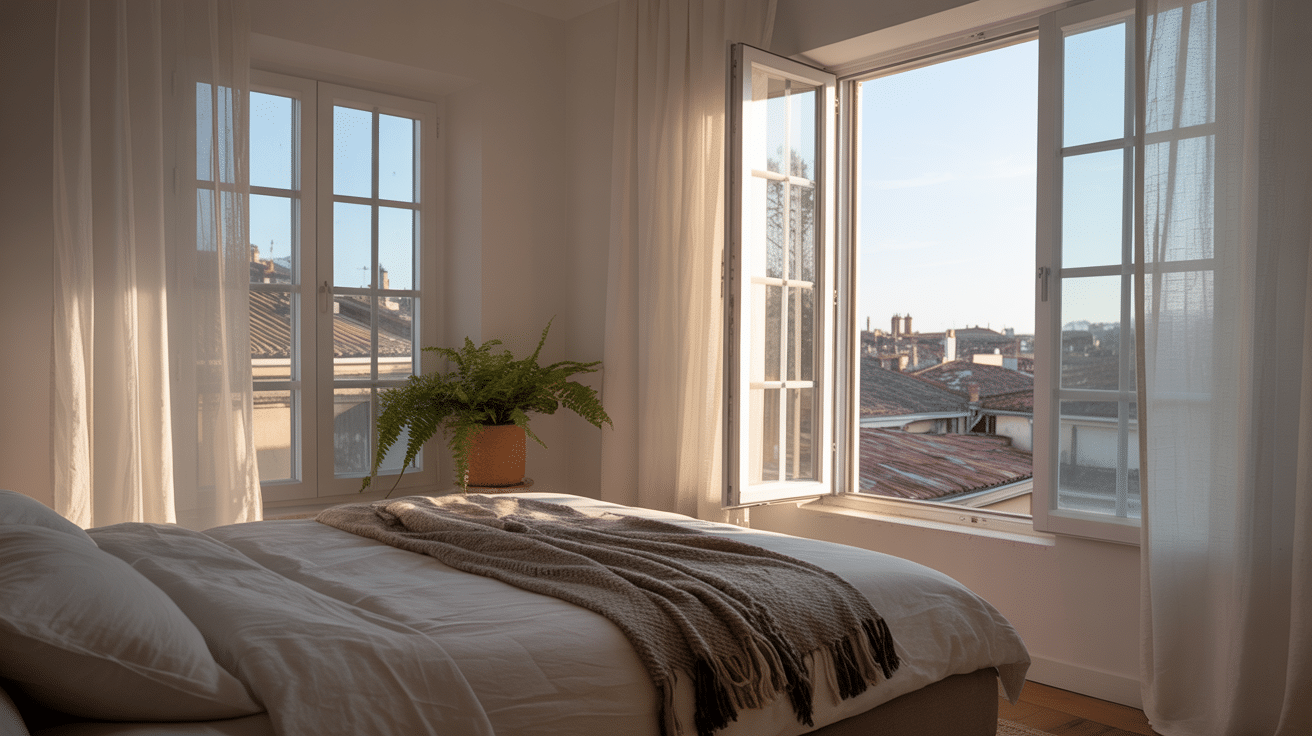
Tilt-and-turn windows operate in two ways: they tilt inward for airflow or swing inward like a door. Popular in Europe, they combine functionality with energy efficiency, offering a range of installation options.
| Pros | Cons |
|---|---|
| Adaptable with two opening options. | More expensive than standard windows. |
| Provides strong insulation and efficiency. | Requires careful, precise installation. |
| Easy to clean from indoors. | Inward opening may affect furniture placement. |
16. Fixed Windows
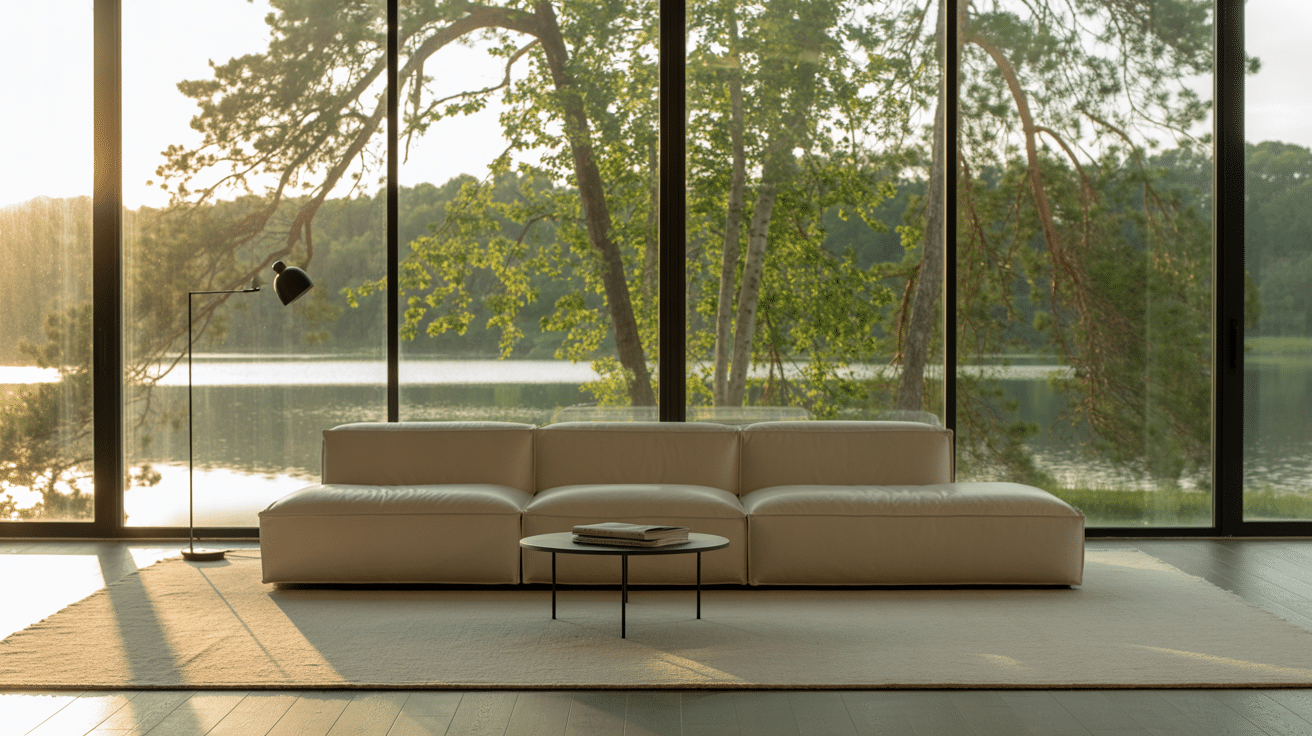
Fixed windows cannot be opened, but they provide unobstructed outdoor views. They maximize natural light, reduce energy leaks, and are often paired with operable windows to balance design with airflow needs.
| Pros | Cons |
|---|---|
| Provides wide, clear outdoor views. | No ventilation is possible. |
| Low maintenance, no moving parts. | It can cause heat gain or glare. |
| Energy-efficient with tight seals. | It may build condensation in humid climates. |
17. Transom Windows
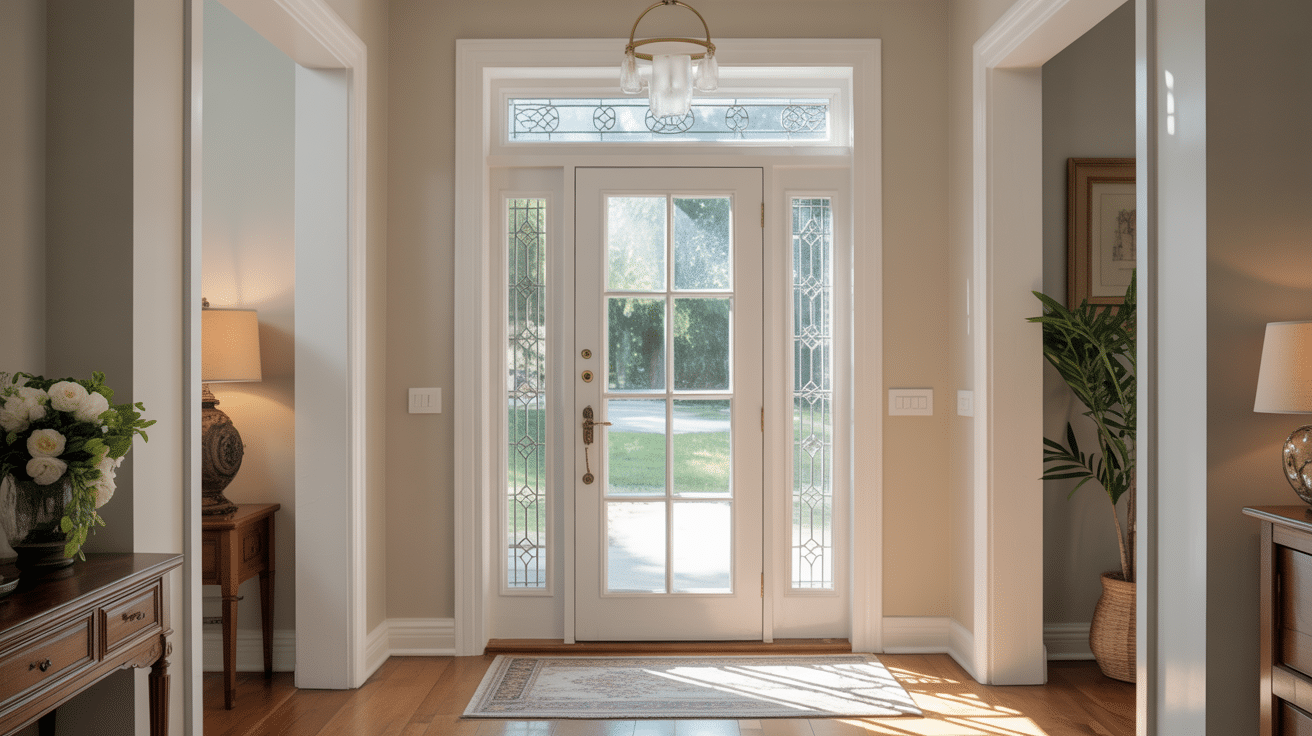
Transom windows are narrow panes placed above doors or larger windows. They admit light into dark spaces, improve airflow when open, and add decorative charm to entryways or living rooms.
| Pros | Cons |
|---|---|
| Brings extra light into dim spaces. | Small size limits functionality. |
| Decorative addition above doors or windows. | Custom options can be costly. |
| It can provide airflow when operable. | Hard to reach for cleaning or adjustment. |
Factors to Consider While Choosing a Window
When selecting window styles for your home, consider more than just appearance. I’ve helped many homeowners through this process, and these factors make the biggest difference.
Energy Efficiency
Choose windows with good insulation to cut heating and cooling costs. Look for double or triple-pane glass with Low-E coatings.
These features can reduce your energy bills by 20-30%. Gas fills between panes add extra insulation for better performance.
Ventilation Needs
Match the style to the desired airflow in each room. Kitchens and bathrooms require good ventilation to control moisture.
Casement windows open wide for maximum airflow. Double-hung windows allow you to control airflow through top and bottom openings.
Natural Light
Larger glass areas brighten spaces but may cause glare or heat gain. South-facing windows bring lots of light but can overheat rooms in summer.
Consider window treatments for glare control. Some glass coatings reduce brightness while maintaining clear and comfortable views.
Maintenance
Some window styles are easier to clean and repair than others. Tilt-in sashes let you clean both sides from inside your home.
Wood frames look beautiful but need regular painting. Vinyl requires minimal care, while aluminum lasts longer with occasional touch-ups.
Budget
Balance initial cost with long-term savings on energy and upkeep. Quality windows last 20-25 years with proper care.
Factor in installation costs – they’re usually 30-50% of your total budget. Cheap windows often end up costing more over time due to higher energy bills.
Home Style
Select the styles that complement your home’s architecture and personal style. Traditional homes look best with classic styles, such as double-hung or casement windows.
Modern homes often feature large picture windows. Consider proportions – windows should fit the scale of your rooms properly.
Care, Maintenance, and Replacement Tips
Taking care of your windows isn’t hard work. Simple maintenance keeps them working great and saves you money in the long run.
- Clean Regularly: Wash frames and glass every few months with mild soap and water. Avoid harsh chemicals that damage seals or finishes.
- Check Weatherstripping: Inspect seals annually and replace if you feel drafts or see cracks. This small fix prevents big energy bill increases.
- Lubricate Moving Parts: Apply silicone spray to tracks and hinges on an annual basis. Don’t use oil-based products that attract dirt and cause sticking.
- Repair Minor Issues First: Fix broken sash cords, cracked glass, or loose hardware instead of replacing entire windows. These repairs cost much less.
- Replace When Necessary: Consider replacing frames that are rotting, broken seals between glass panes, or windows over 20 years old that lack modern energy features.
- Get Professional Installation: Hire certified installers who are knowledgeable about building codes and proper sealing techniques. Poor installation ruins even the best windows.
Conclusion
Now you know the essential window styles that can change your home. Each type serves different needs, ranging from energy savings to improved circulation to breathtaking views.
Match your windows to the purpose of each room and your home’s style. Don’t forget to consider long-term costs, such as maintenance and energy bills, when making your decision.
The right windows are an investment that pays back through lower utility costs and increased home value.


